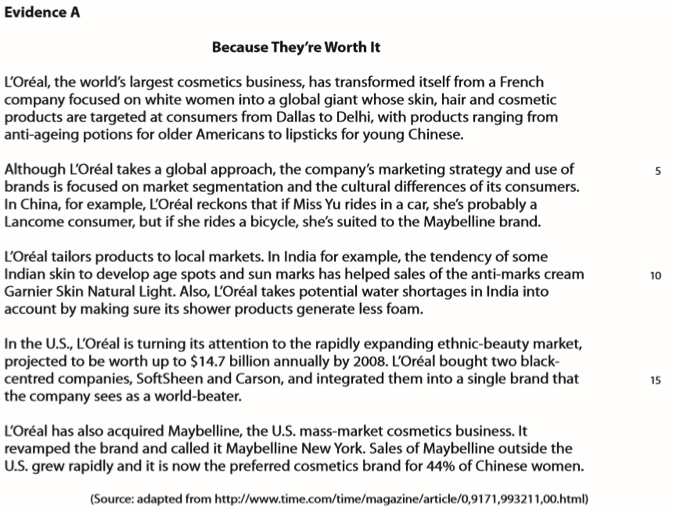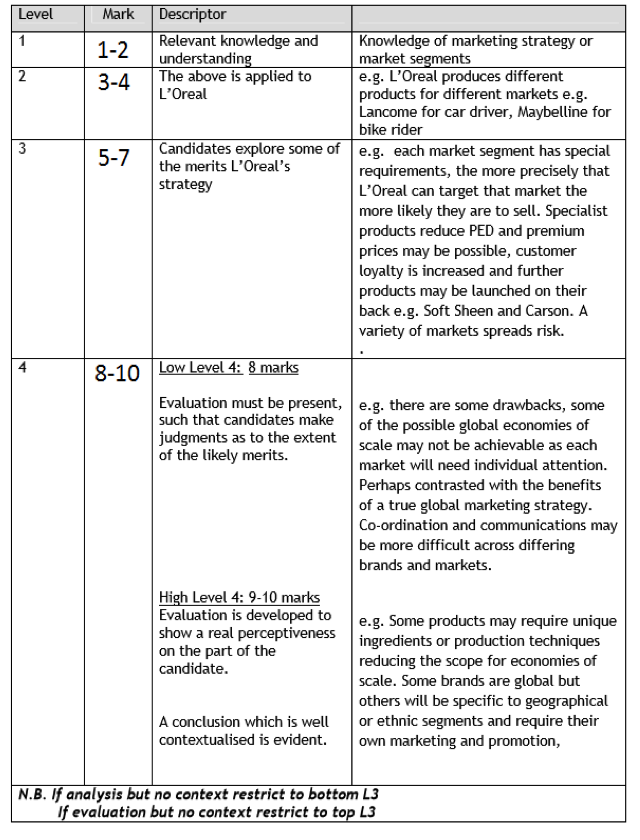Social and Cultural Differences
Social and cultural differences
Social and cultural differences are significant. They have to be taken into consideration by MNCs. Their impact is easily underestimated! We can talk about cultural differences between societies, nations or economies. But we might also talk about differences between groups within a nation – the essence of market segmentation.
This may include an expectation that people will be flexible – which in some cultures they may not! People with whom MNCs do business with may have unfamiliar habits and conventions. Thus prior knowledge of and diligent respect to differences in culture is important for success.
Areas of difference
Whirlpool made the assumption that if customers in one country like a product, that customers in another country will as well. Product design is key and detailed knowledge of the market in question is needed to ensure that designs are appropriate.
Equally communication is important – and the most obvious difference is that of language. Thus if you are bi-lingual in the business world, you are highly useful (some life advice: learn Mandarin!). But there are other sources of difficulty:
-
Conventions in business discussion differ – you must approach prospective partners in a way that doesn’t offend them. Prior knowledge of this for negotiators in culturally different economies is essential. E.g. Chinese convention of serving.
-
Differences must be considered when planning advertising/promotional campaigns. E.g. Tata motors emerging into Europe.
-
The marketing message must be meaningful and appropriate to the culuture in question. Literal translations of advertising slogans are particularly likely to fail (e.g. GM Nova car in Spanish = No Go thus a flop in South America!). Brand names maybe adapted (e.g. Jif to Cif).
Local pricing and distribution (place) strategies must be adapted too. In short, market orientation is even more important in international business than when selling in the domestic market. Some businesses fail altogether in emerging markets, and some live in hope that their costly investments in new markets will eventually pay off.
What to do?
40% of businesses that compete in emerging markets now get their products designed locally. Unilver for example, the giant food and household produce manufacturer, have set up 68 different innovation centres across 20 countries. They study local markets and devise the products that best meet their needs. Unilver’s approach means that they cater for different market segments within countries.
Some businesses assume that low incomes = low prices. To a certain extent, this is true. Levis wouldn’t be too popular with the average Indian family. It had to change its price and design strategy and came up with some affordable jeans which sold well. Though low prices do imply low quality, thus some compromise is essential – such as stripping a product of features until a balance of affordability is attained. E.g. Nokia and its reverse innovation.
Appropriate marketing to different tastes – JV help overcome social/cultural barriers
__Question: __what is a joint venture?
Key Concepts: a joint venture is a joint project between two businesses where each of them maintains their independence
GM with its ‘Nova’ car obviously needed to make their marketing more appropriate to the culture that they were aiming towards. Businesses that want to expand into new markets must allow time to get to know their target markets. Join ventures might help! They need to find local agents, hire local employees with a good understanding of local markets and they may even do a product trial in a small area before launching for real. All these require investment – and that’s prior to even full blown MR!!
Information and communication factors – e.g. the Asian way
Although business conventions differ from country to country, Asian countries are markedly different than business practices in the west. Most importantly – Asians expect to spend time building up trust. So the early stages of negotiating JVs would require lengthy meetings, meals out and a chance to learn about each other and establish trust. Some westerner businesses might see these social occasions as a waste of time and money, though here is where the cultural difference lies.
There are other Asian ways – not speaking too long when using an interpreter, giving a business card with two hands, avoiding controversial issues that might risk ‘losing face’ are all Asian customs.
The key thing is to spend time discovering how to behave to avoid offending potential allies. Body language is another important area – gestures that are friendly in one culture maybe anything but in another. This all confirms that preparing to enter a new market is usually more costly than exporters expect.
How firms respond to demand side factors
Adapting marketing strategies
The high rewards and high risk of entering new emerging markets are clear and evident. Some businesses have cut their losses and withdrawn (e.g. Tesco and Japan) while others continue to pour money into their projects in the hope of a long term turn a round and gain (e.g. Tesco and America).
Being well informed about cultural differences can reduce the risks. The most successful businesses are nimble – they can adapt to change by keeping themselves well informed and moving swiftly when the facts change. They are flexible enough to work within differing cultures and can take complex decisions based on accurate information. All this requires willingness to invest time and money in the planning process. If you are just ‘offshoring’ an aspect of production, you obviously don’t need to worry about this but if you are ‘outsourcing it’ then you definitely do!
Global mass markets
There are many global mass markets – e.g. Starbucks and Coca-Cola. There is a clear sequence of events that leads to the creation of mass markets; they are characterised by economies of scale (benefits due to size which reduce average costs) that allow businesses to produce efficiently. In some cases the product is identical across the planet (‘the ethnocentric marketing strategy – AKA the domestic approach’). In other cases the firm adapts products to suit different markets (‘the polycentric marketing strategy – AKA the international approach’).
Many well-known businesses in global markets use similar marketing strategies in a wide range of markets in the belief that some markets are similar and that some are different (‘the geocentric marketing strategy – AKA the mixed approach). They can therefore still reap the benefits of E of S so that brand names/images are recognisable everywhere – however, they need to consider whether this is the best strategy for every market. All exporters must consider their position on the global marketing strategy ‘scale’ and whether a standardised or customised strategy will be more successful.
Global niche markets and ‘the long tail’
A market niche is a smaller, more specialised segment of a larger market. E.g. cars and clothing are larger markets though classic cars and maternity clothes are niches within those markets.
The benefits of niche marketing:
-
By focussing on a niche, provides specialised services/products specific to customer needs (highly market orientated).
-
Thus more valuable/greater demand/loyalty.
-
Thus can charge higher prices.
-__ Higher demand = more sales/profits.__
- Consumer demand is price inelastic (necessity) – thus less responsive to price changes.
-__ Direct competition reduced.__
- Know customers better – thus develop more effective marketing/sales strategies.
Niche markets are good for consumers too – they allow for individual tastes to be satisfied, raising the level of overall well-bring that buyers experience. Individual preferences vary greatly, there are whole subcultures that share minority enthusiasms that cry out for niche markets to satisfy them. E.g. Triumph motorcycles – very niche!
A global market niche has very similar characteristics to local niche markets but operates on a global scale. Some global niches are larger. Some are very specialist and small. For some producers, production on a global scale is the only option as there is insufficient demand on a domestic scale to sustain the business (in effect this is the BMW approach; luxury goods seem to be more internationally tradable than other goods). For others, by entering a niche market with less direct competition you are simply escaping hostile competition from low cost foreign producers.
There is a connection here between the idea of the ‘Long Tail’ where many scattered ‘one-off’ or ‘niche’ sales more than make up for a large number of ‘mainstream sales’. E.g. Triumph could sell one motorbike to the value of 3 Suzuki’s.
Global niche marketing is usually to do with marketing a differentiated or specialist product to one or more market segments. Many businesses operating in global niches are classed as small to medium size enterprises (SMEs). The EU defines these as businesses employing <250 staff. In fact, 99% of businesses in Europe are SMEs and account for 50% of employment.
These global niches can be found in both mature and expanding markets. They do not include small firms selling undifferentiated products in a global market (i.e. global mass marketing). Rather, they offer a product or service that is distinctive and clearly recognised as such by the target market.
Characteristics of successful global niche businesses will include:
-
Clear understanding of the needs of their customers and target market
-
High levels of customer service
-
Expertise in their field
-
Prioritising profit over market share (e.g. Triumph).
-
Innovation to satisfy change in the market
-
Focus on cost efficiency but not at the expense of quality
-
Using the marketing mix for the differing market segments
Exam Style Question
Evaluate the likely merits of L’Oreal’s global marketing strategy of focusing on specific market segments – 10 marks
Keywords / Mark Scheme:
Structure = 2 vs 2 plus conclusion.
Agreeing points = Niche means more likely to be successful, cosmetics is competitive. Niche reduces PED and increases loyalty, such as Soft Sheen/Carson
However points = global economies of scale cannot be achieved in niche. Culutral/social barriers may still occur.





